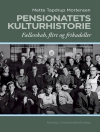Victorian Fetishism argues that fetishism was central to the development of cultural theory in the nineteenth century. From 1850 to 1900, when theories of social evolution reached their peak, European intellectuals identified all ‘primitive’ cultures with ‘Primitive Fetishism, ‘ a psychological form of self-projection in which people believe everything in the external world—thunderstorms, trees, stones—is alive. Placing themselves at the opposite extreme of cultural evolution, the Victorians defined culture not by describing what culture was but by describing what it was not, and what it was not was fetishism. In analyses of major works by Matthew Arnold, George Eliot, and Edward B. Tylor, Peter Melville Logan demonstrates the paradoxical role of fetishism in Victorian cultural theory, namely, how Victorian writers projected their own assumptions about fetishism onto the realm of historical fact, thereby ‘fetishizing’ fetishism. The book concludes by examining how fetishism became a sexual perversion as well as its place within current cultural theory.
Tabella dei contenuti
Preface
Abbreviations
Introduction
1. Primitive Fetishism from Antiquity to 1860
2. Matthew Arnold’s Culture
3. George Eliot’s Realism
4. Edward Tylor’s Science
5. Sexology’s Perversion
Conclusion
Notes
Bibliography
Index
Circa l’autore
Peter Melville Logan is Associate Professor of English at Temple University and the author of
Nerves and Narratives: A Cultural History of Hysteria in Nineteenth-Century British Prose.












